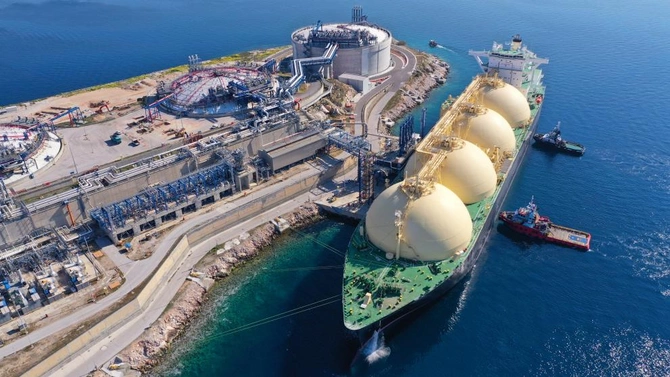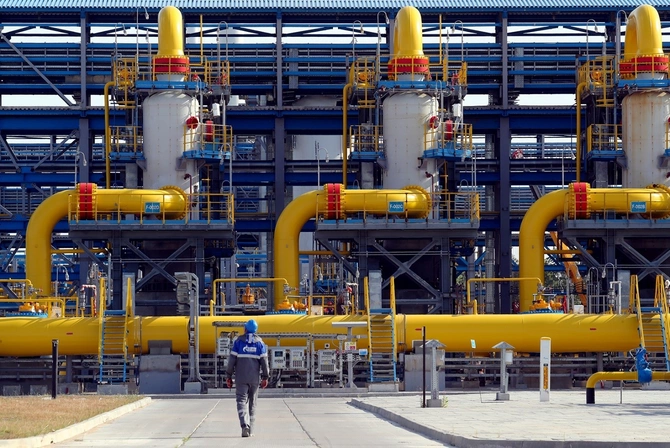
Shutterstock photo
Against the backdrop of a shifting energy landscape across Eurasia and escalating political developments in the region, attention has once again turned to the gas market of the South Caucasus. Georgia’s role as a transit country, Azerbaijan’s growing ambitions in the European direction, and Russia’s efforts to retain even small export markets-all these factors are shaping a new reality for all players involved. What development scenarios are possible for Georgia, Azerbaijan, Russia, and Armenia amid this transformation? How is the balance of interests shifting, and what lies behind the return of Russian gas to Georgia?
When discussing the 18-year period of Russian gas supplies to Georgia, it is important to note that for much of that time, gas was delivered as payment for transit services rather than through commercial transactions. In essence, these were not sales in the full commercial sense. Nevertheless, this arrangement proved highly beneficial for Georgia, as it received more gas than it could have afforded if required to pay in cash.
The shift to monetary payment for transit services was largely a political decision by Tbilisi-arguably, not the most advantageous one. Moreover, this transition coincided with the deterioration of Russian-Georgian relations, providing additional motivation for Tbilisi to increase purchases of Azerbaijani gas.
At the same time, Azerbaijan ramped up production and gained the capacity to increase exports, including to Georgia. Politically, buying gas from Azerbaijan was a safer and more attractive option for Tbilisi, especially since alternatives were limited for a long period. For Gazprom, the Georgian market was not a priority, primarily due to strained political relations.

© aerial-drone/AdobeStock
Today, the situation is changing. Azerbaijan has secured access to the European market, where demand and prices are higher. For Europe, replacing Russian gas without increasing costly LNG imports-which drive up global prices-is a strategic advantage. Azerbaijani pipeline gas offers the EU both economic and political benefits, as Brussels has no major grievances against Baku. Therefore, Europe welcomes increased deliveries from Azerbaijan, making this market even more attractive for Baku, given the significantly higher European prices.
The only constraints are pipeline capacity and production volumes. This makes it logical to redirect even relatively small volumes previously supplied to Georgia toward Europe, where they generate greater profits. As a result, Georgia faces a choice: either pay near-European prices (around $400 per thousand cubic meters, even during off-peak seasons) or resume purchases of Russian gas.
Russia, for its part, has virtually lost access to the European market due to sanctions and infrastructure restrictions, retaining only a single operational pipeline. Gazprom has already reduced exports by 140 billion cubic meters compared to 2021 and is now interested in any alternative markets to sustain production levels. Therefore, even Georgia’s relatively small market holds value for Russia today. Gazprom is ready to offer Tbilisi prices lower than those in Europe.

From an economic perspective, this is beneficial for Georgia, allowing it to secure cheaper gas. At the same time, the political tensions have receded into the background. Moreover, Georgia has gained significant economic advantages amid the deterioration of Russia’s relations with the West. Large volumes of goods now transit through Georgian territory, and many Russian companies and citizens have relocated to Georgia, bringing additional revenue. Over the past few years, the country’s economy has demonstrated impressive growth, with GDP increasing at nearly double-digit rates in 2022-2023.
Thus, all parties appear to benefit: Azerbaijan earns more on the European market, Georgia secures cheaper Russian gas, and Russia manages to sell at least some of its output. This balance seems acceptable to all stakeholders.
As for the transit of gas to Armenia, it continues. However, against the backdrop of rapidly cooling relations between Russia and Armenia, questions arise about future volumes. Armenia’s leadership has clearly set a course toward European integration and distancing itself from Russia, which may eventually lead to political pressure from the EU to reduce trade with Moscow, including dependency on Russian gas.
Furthermore, if Armenia exits the Eurasian Economic Union, this would likely result in higher gas prices, potentially forcing Yerevan to seek alternative suppliers, such as Iran. Faced with high prices, Armenia may reduce gas consumption, which would also impact transit volumes through Georgia.
In this context, the future of gas transit in the region has become hostage to political developments. Ultimately, the outcome depends not so much on the will of Moscow or Tbilisi, but on the strategic choices made by Yerevan.
Share on social media